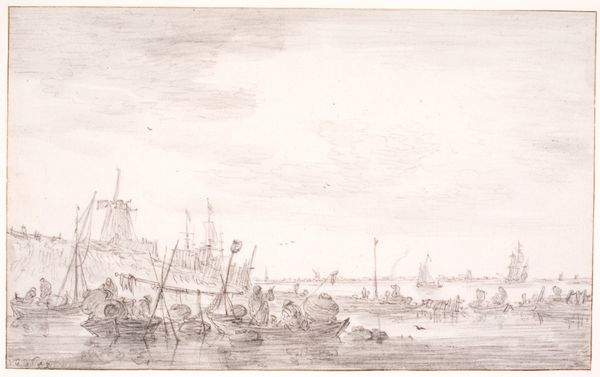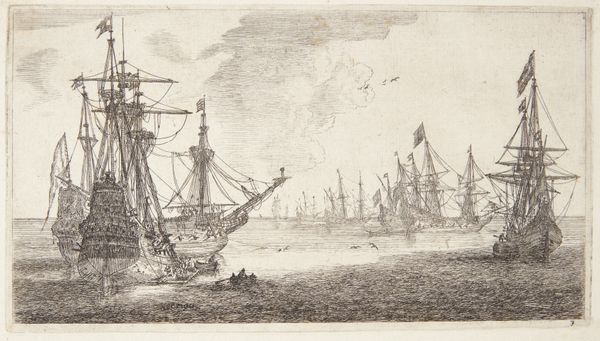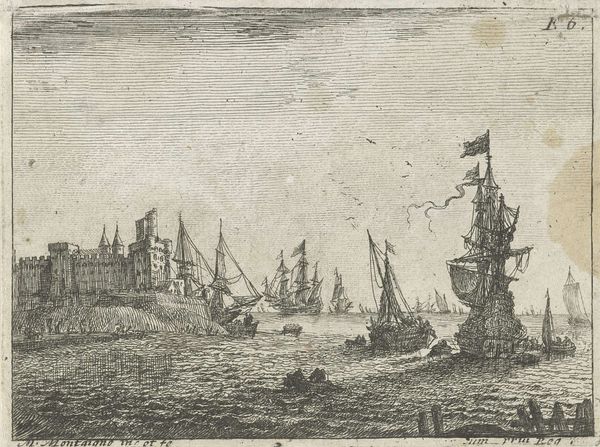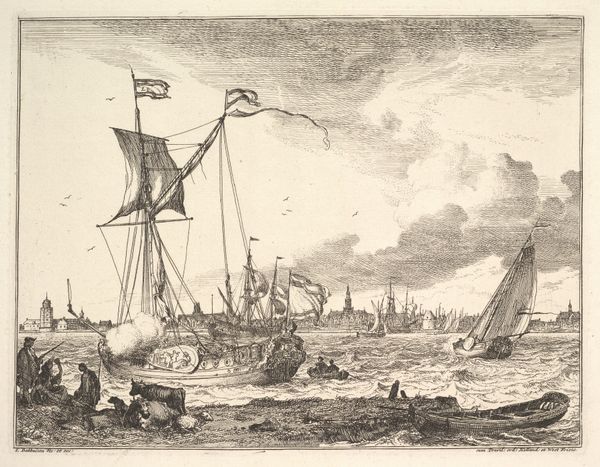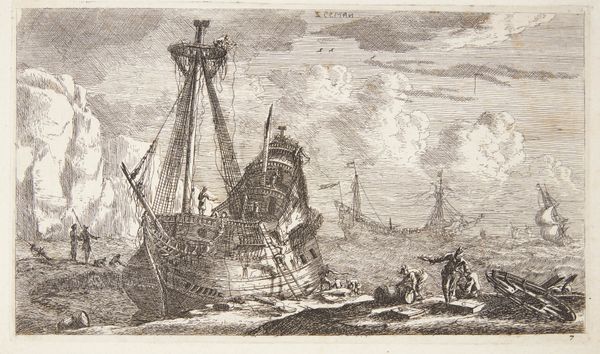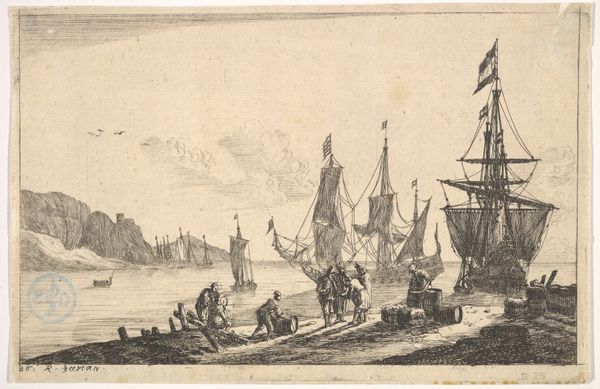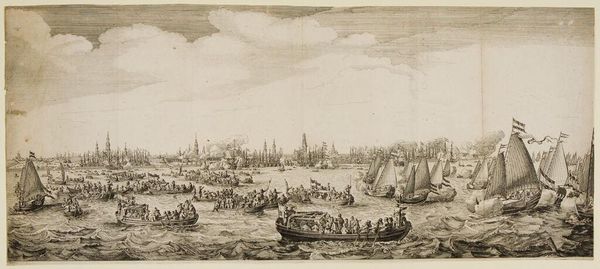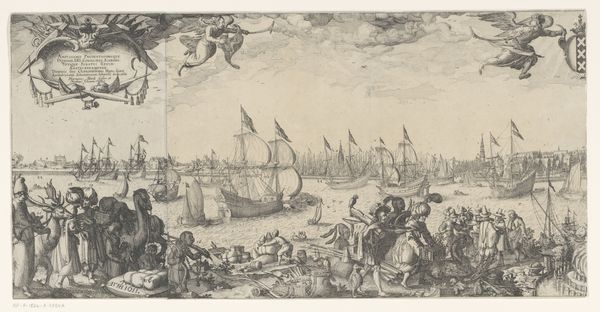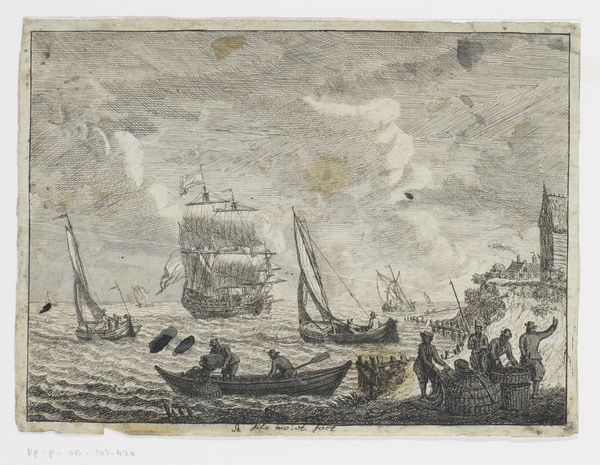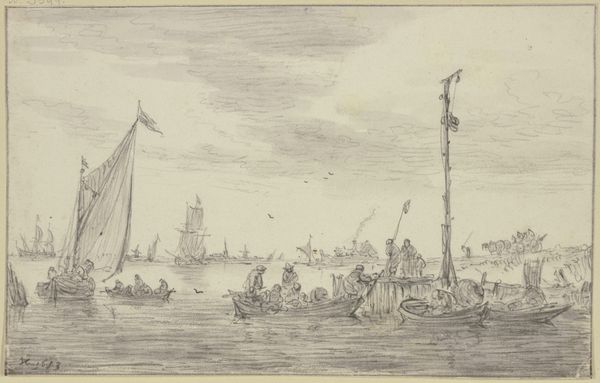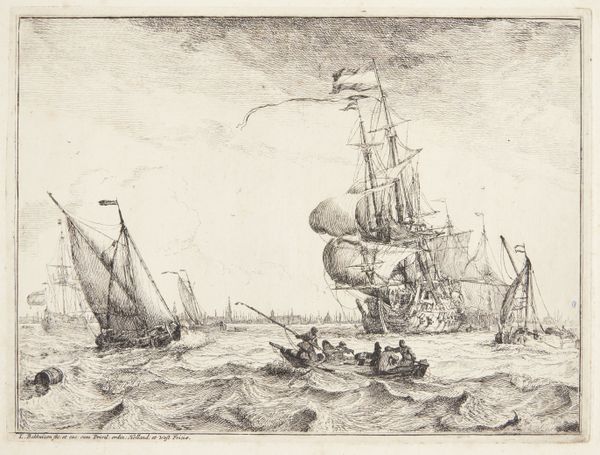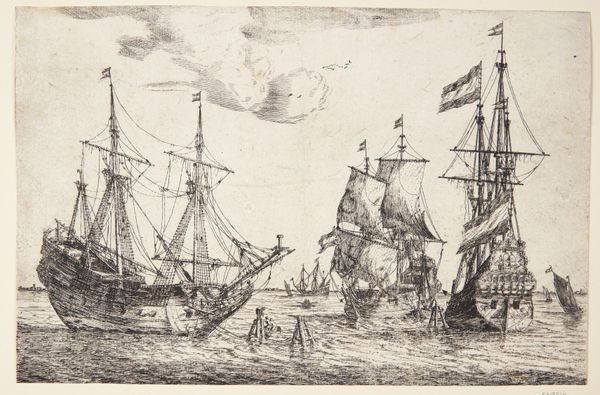
print, etching
#
baroque
#
dutch-golden-age
# print
#
etching
#
landscape
#
etching
#
figuration
#
form
#
line
#
cityscape
#
genre-painting
Dimensions: height 122 mm, width 154 mm
Copyright: Rijks Museum: Open Domain
Curator: Welcome. Today, we'll be examining Cornelis Claesz. van Wieringen's etching, "Havenhoofd met vissers die hun netten binnenhalen," dating approximately from 1590 to 1633. Editor: Immediately striking is the monochromatic rendering. The density of lines creates a rather somber, even gritty atmosphere, don't you think? Curator: Precisely. Note the deliberate deployment of line and tone. The artist manipulates hatching and cross-hatching to model forms and simulate texture, consider the density around the figures hauling in the nets, this adds definition and enhances the overall compositional structure. Editor: Yes, the etching process itself fascinates me. Think of the physicality, the labor, required to create these images. Copper plates meticulously engraved, wiped with ink, then pressed onto paper— a whole process which would entail collaboration between various specialist artisans. It reflects a whole network of economic relations embedded in early modern Dutch society, making art accessible to wider markets through printmaking. Curator: An insightful point. Furthermore, if you look closely, van Wieringen creates spatial depth, placing considerable emphasis on aerial perspective. Editor: Absolutely! The city rendered faintly in the distance underscores the vastness. But going back to its material context: These weren't simply autonomous aesthetic objects. Their distribution through prints also aided in communicating mercantile ambitions and the daily toil within burgeoning harbor towns. They offer tangible depictions, mirroring society’s growth through accessible images and documenting lives seldom visible within elite portraiture. Curator: Agreed. Van Wieringen adeptly harnesses compositional balance in "Havenhoofd," guiding the observer’s gaze through carefully arranged visual elements that establish spatial harmony and effectively capture light and atmosphere. Editor: In essence, it acts as a sort of material record, subtly negotiating aesthetic considerations with depictions of everyday struggles from working individuals of the period, a testament to how images are constructed and how they reflect, but also participate in societal development. Curator: Yes. The artwork functions on several planes—an aesthetically pleasing seascape, and a rich field ripe for semiotic examination. Editor: And as such, its enduring significance comes from this ability to showcase materials and social circumstances in parallel, echoing within dialogues even now.
Comments
No comments
Be the first to comment and join the conversation on the ultimate creative platform.
